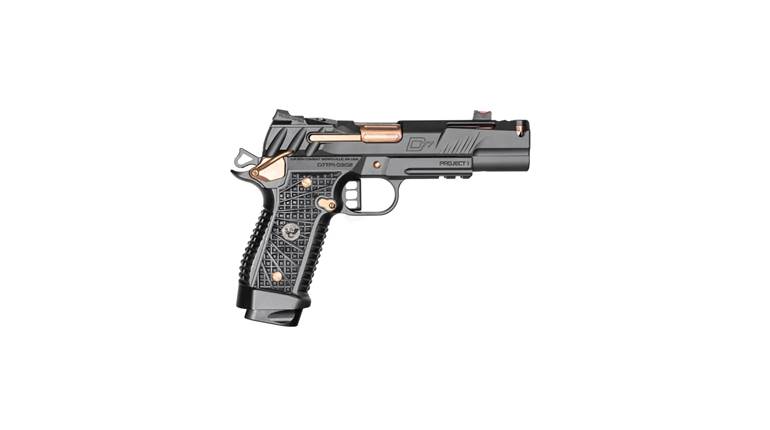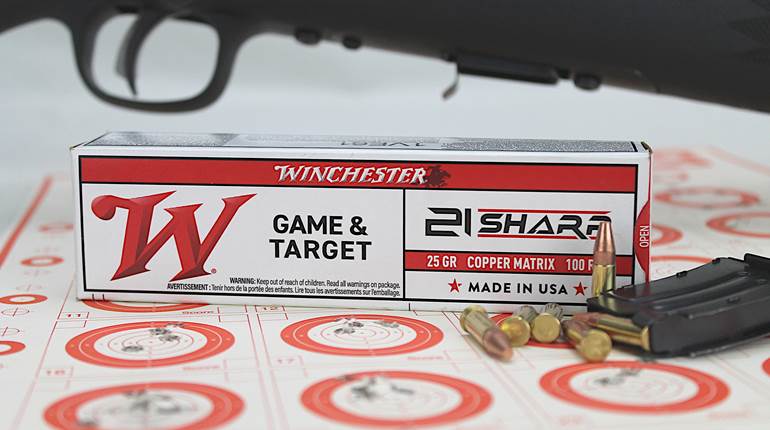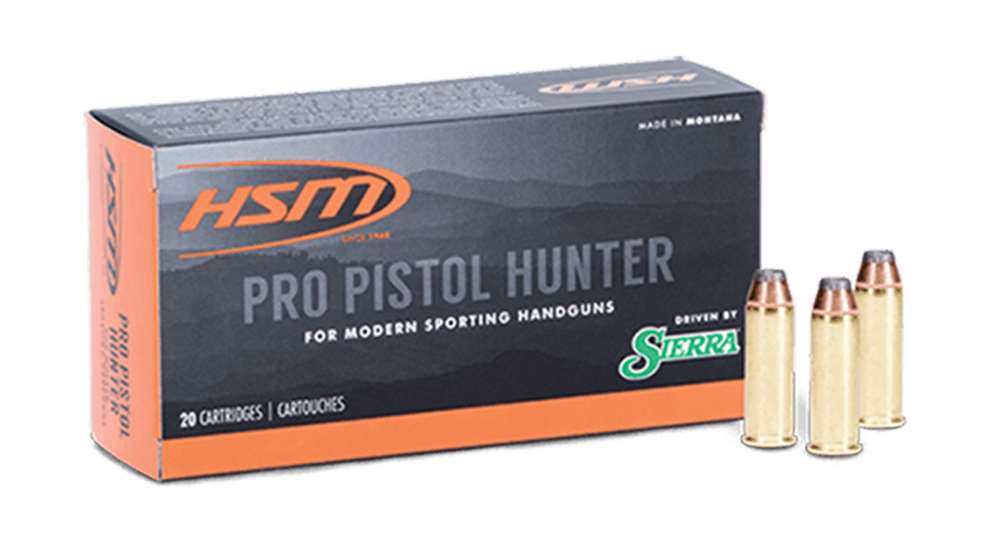
The idea is to take a factory cartridge, insert it into a single-shot handgun and make a one-shot kill at an ethical distance on a whitetail deer. Not so hard, right? It absolutely can be, but fortunately I’m also a bowhunter, with a skillset earned though a lifetime of experience in the field. Most of the land I hunt features jungle-like forest dispersed across rolling hills and steep gradients. Shots tend to be close, so handgun hunting isn’t as hard as it can be for folks in more open environments.

Let’s go back to the sort of experience that comes with bowhunting. Something I’ve noticed while at camp with friends, when discussing how and where to hunt a particular property, is that you can distinguish a rifle hunter from a pistol or bowhunter pretty quickly. I’ve converted a few of my rifle buddies over to pistol and archery hunting, and their hunting success rate soared. Rifle shooters/hunters don’t require close shots—they simply find a nice vantage point with a well-sighted rifle and enjoy their day. Of course, that is a blessed way to spend an afternoon during the whitetail rut,
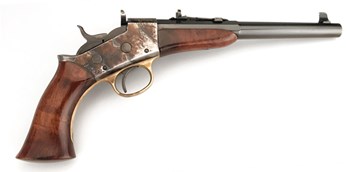 but I yearn for a challenge that meets my ethical boundary. In order to get within a few dozen yards of my game, I need to understand the deer’s behavior as well as their exact travel patterns. I need to be within my ethical pistol/bow zone of 25 yards. Sure, a supported pistol shot out to 100 yards can soundly be made, and I can certainly hit the X-ring from 90 meters with an arrow, but I want to leave nothing to chance and ensure the quickest and most precise kill possible.
but I yearn for a challenge that meets my ethical boundary. In order to get within a few dozen yards of my game, I need to understand the deer’s behavior as well as their exact travel patterns. I need to be within my ethical pistol/bow zone of 25 yards. Sure, a supported pistol shot out to 100 yards can soundly be made, and I can certainly hit the X-ring from 90 meters with an arrow, but I want to leave nothing to chance and ensure the quickest and most precise kill possible. Moving Forward
Of course, a great-shooting handgun is necessary, but capable ammunition is just as important, if not more so. Lately, I have been shooting HSM Ammunition. I have been hunting thick cover this season to improve my chances at a close-range shot, with a 9.5”-barreled Uberti Model 1871—a single-shot, rolling-block design modeled after Remington’s Model 1871
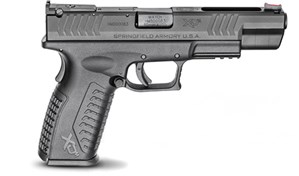 Rolling Block. I also need back-up protection for would-be derelict black bears. My “fightin’ iron” will be a Springfield XDM chambered for 10 mm Auto. Both guns will be topped off to max capacity with HSM Pistol Pro Hunter line.
Rolling Block. I also need back-up protection for would-be derelict black bears. My “fightin’ iron” will be a Springfield XDM chambered for 10 mm Auto. Both guns will be topped off to max capacity with HSM Pistol Pro Hunter line. Nuts and Bolts
The Uberti, chambered in .357 Mag., is loaded with a 158-gr. jacketed soft point (JSP) made by Sierra Bullets. Not a wad-cutter by any means, but this JSP features a 0.260” meplat. For those unfamiliar with this term, meplat refers to the blunt tip of a bullet, specifically the tip’s diameter. Why a blunt, soft point? I can’t blood-trail very well due to being colorblind, and considering the jungle-like cover of wild grapes, honeysuckle and low-growth flora that makes crawling on hands and knees an even more arduous task, I want as much energy transfer from the bullet as possible. I believe this Sierra bullet will live up to the task at hand. HSM utilizes a fast burning propellant with this load, that is not temperature stabilized. Those hoping to reload will be pleased to know Starline is HSM’s source for brass.
As for the 10 mm Auto load featuring the 180-gr. jacketed hollow point (JHP), the bullet is most ideally suited to personal protection and target shooting, likely not the best load for black bears—HSM provides a distinct line dedicated to bear hunting with strong bullet construction, to combat the heavier tissue and skeletal structure of which bears are comprised. According to HSM, the 180-gr. JHP will provide rapid, controlled expansion for defensive use, and is suitable on small game and large varmints, while providing sufficient accuracy for use in competitive shooting events. Again, Starline brass is sourced, and the powder variant is fast burning and not temperature stabilized.
Puddin’
To begin a thorough examination of the two HSM pistol-hunting loads, I took several guns to the range—a S&W Model 360, an Uberti Model 1871, a Ruger GP-100 Match Champion, a Springfield XDM and a CMMG 300 Mk10—all with varied barrel lengths to measure velocity deviations. Will there be major velocity loss going to a short barrel? Let’s find out.
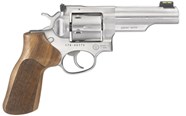
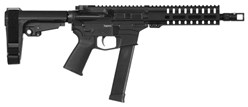

From left: Ruger GP100 Match Champion, CMMG INC., Banshee 300 Mk10 and Smith & Wesson Model 360
Across the board, I found recoil of the .357 Mag. load to be manageable, though the Smith & Wesson Model 360 Airweight (weighing just under 15 ozs.) was a bit snappy, but still not a miserable experience. The sub-2” barrel of the S&W provided for slightly higher velocity deviation across the 10 shots fired, as did the 4.2”-barreled Ruger GP-100 Match Champion chambered in 10 mm Auto. I expected the slight rise in deviation as revolvers do not have a monolithic barrel and chambers; the Sd numbers were still low and consistent, telling of the company’s attention to detail. Comparing the 1.875” barrel of the S&W to the 9.5” barrel of the Uberti, the data results show a difference of, ironically, 360 f.p.s., with the latter obviously winning the charge. HSM notes the optimum barrel length for this .357 Mag. load to be 4.5”.
As for accuracy expectations at 25 yards, the Uberti, combined with the HSM 158-gr. load, proved to be a more-than-capable combination of accuracy and velocity. With five, five-shot groups fired, I measured the average group size to 1.6”, with the smallest measuring 1.25” and the largest at 1.92”.
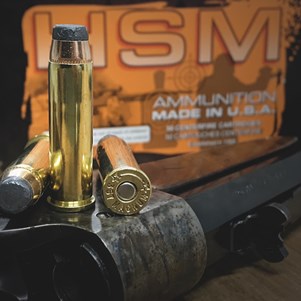 Velocity averaged 1306 f.p.s. from the Uberti, which provided a Sd of 10.5 f.p.s. During accuracy testing, I decided to leave the Caldwell G2 Precision Ballistic Chronograph running to capture the 25-shot string of fire. The average velocity dropped just slightly to 1296 f.p.s., with a slightly larger Standard deviation of 12.2 f.p.s.—not bad at all. Examination of spent brass revealed zero signs of excessive pressure.
Velocity averaged 1306 f.p.s. from the Uberti, which provided a Sd of 10.5 f.p.s. During accuracy testing, I decided to leave the Caldwell G2 Precision Ballistic Chronograph running to capture the 25-shot string of fire. The average velocity dropped just slightly to 1296 f.p.s., with a slightly larger Standard deviation of 12.2 f.p.s.—not bad at all. Examination of spent brass revealed zero signs of excessive pressure.Looking at the ballistic calculator, this data for the .357 Mag. load suggests that with a 25-yard zero, the 158-gr. Sierra JSP will drop roughly 7” at 100 yards, but just under an inch at the 50-yard mark and only 3” low at 75 yards. Looking at the energy numbers, this load produces roughly 598 ft.-lbs. at the muzzle, and according to Hornady’s ballistic calculator, the 158-gr. flat nose will impart 532 ft.-lbs. of energy into the target at 25 yards. Furthermore, at 50 yards, this load unleashes 478 ft.-lbs. and 399 ft.-lbs. at 100 yards. Given a well-placed shot, this gun and this load combination should be a capable one.
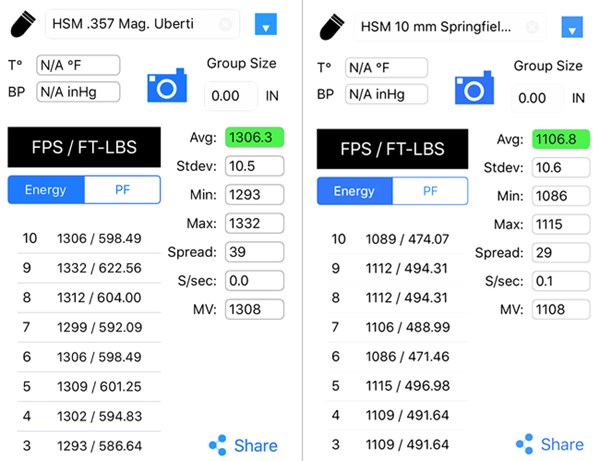
HSM states this load was designed and optimized for 4”-barreled guns. Now, the bullet construction of the JHP for the Pro Pistol Hunter line may not be a be-all and end-all bear load, but I find it provides a happy medium between capability, cost and versatility. When all is said and done, I may even end up harvesting a few does and/or coyotes with the 10 mm Auto for the landowner’s game management objectives.
Does the JHP 10 mm Auto load provide sufficient construction for home defense? Absolutely. Though HSM does have specialized loads for that, too. To learn more about the Montana-based manufacturer, visit hsmammunition.com












